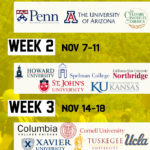FDA Must Act Now to Protect Kids
Government Survey Shows Historic Decline in Cigarette Smoking is Great News
WASHINGTON, April 16, 2015 — The following is a statement by Matthew L. Myers, President, Campaign for Tobacco-Free Kids:
The 2014 National Youth Tobacco Survey released today shows that historic declines in youth cigarette smoking continue, but youth use of electronic cigarettes tripled from 2013 to 2014 and, for the first time, exceeds use of regular cigarettes.
Among high school students, current cigarette smoking (use on at least 1 day in the past 30 days) fell from 12.7 percent in 2013 to 9.2 percent in 2014, reaching another record low. However, current e-cigarette use jumped from 4.5 percent in 2013 to 13.4 percent in 2014 (it was just 1.5 percent in 2011). Also troubling, there was no decline in overall tobacco use from 2011 to 2014, with 24.6 percent of high school students reporting current use of at least one tobacco product in 2014.
The dramatic decline in youth cigarette smoking is terrific news for our nation’s health and shows that the fight against tobacco is winnable if we do what we know works. However, the skyrocketing use of e-cigarettes is frightening and threatens this progress. It should spur strong and prompt action to prevent kids from using any tobacco product, not just cigarettes. We cannot allow the tobacco industry to keep addicting kids and create another epidemic with a new generation of tobacco products.
These survey results show why the Food and Drug Administration must act with urgency to protect our kids and issue a final rule to regulate all tobacco products, including e-cigarettes, cigars and hookah. We again call on the FDA and the Obama Administration to issue a final rule by April 25 – one year after the FDA issued a proposed rule – and to close gaps in the rule by cracking down on marketing and flavors that appeal to kids. The FDA first announced in early 2011 that it planned to regulate e-cigarettes, cigars and other unregulated tobacco products, so these important public health protections are long overdue. We cannot afford more delays that allow the tobacco industry to continue targeting our kids with unregulated tobacco products.
The National Youth Tobacco Survey results were published jointly by the FDA and the Centers for Disease Control and Prevention. The FDA’s own evidence leaves the agency with no excuse for failing to act immediately to protect our kids.
This increase in youth e-cigarette use comes as e-cigarette makers have marketed their products with the same tactics long used to market regular cigarettes to kids, including celebrity endorsements, slick TV and magazine ads that portray e-cigarettes as fun and glamorous, and sponsorships of race cars and concerts. In addition, many e-cigarettes come in sweet, colorful flavors such as gummy bear and cotton candy that obviously appeal to youth.
The increase in e-cigarette use is not the only troubling aspect of the survey. Hookah use roughly doubled for both middle and high school students, with current use among high school students rising from 5.2 percent in 2013 to 9.4 percent in 2014. While overall youth cigar use declined, high school boys smoke cigars at about the same rate as cigarettes (10.8 percent for cigars and 10.6 percent for cigarettes), and African-American high school students smoke cigars at nearly twice the rate of cigarettes (8.8 percent for cigars and 4.5 percent for cigarettes).
Altogether in 2014, 4.6 million middle and high school students were current users of any tobacco product, including 2.2 million who used at least two tobacco products. This is unacceptable and must change. As today’s survey report states, youth use of tobacco in any form is unsafe as nicotine exposure harms adolescent brain development, causes addiction and could lead to sustained use of tobacco products.
We can reduce all tobacco use by applying the same strategies that have proven so effective at reducing cigarette smoking. Since 2000, cigarette smoking has been cut by 67 percent among high school students (from 28 percent to 9.2 percent) and by 77 percent among middle school students (from 11 percent to 2.5 percent). The strategies driving this success include higher tobacco taxes, strong smoke-free laws, well-funded tobacco prevention and cessation programs that include mass media campaigns, and effective FDA regulation of tobacco products and marketing. In 2014, tobacco prevention efforts were enhanced by the most aggressive anti-smoking media campaigns in the nation’s history, including the CDC’s Tips from Former Smokers campaign, the FDA’s The Real Cost campaign and Legacy’s truth® campaign.
Tobacco use is the number one cause of preventable death in our country, killing over 480,000 people and costing about $170 billion in health care bills each year. It is within our reach to win this fight and make the next generation tobacco-free, but only if we have the political will to fully implement what we know works.
The National Youth Tobacco Survey results were published in the CDC’s Morbidity and Mortality Weekly Report.
Campaign for Tobacco-Free Kids www.tobaccofreekids.org
/PRNewswire-USNewswire/










